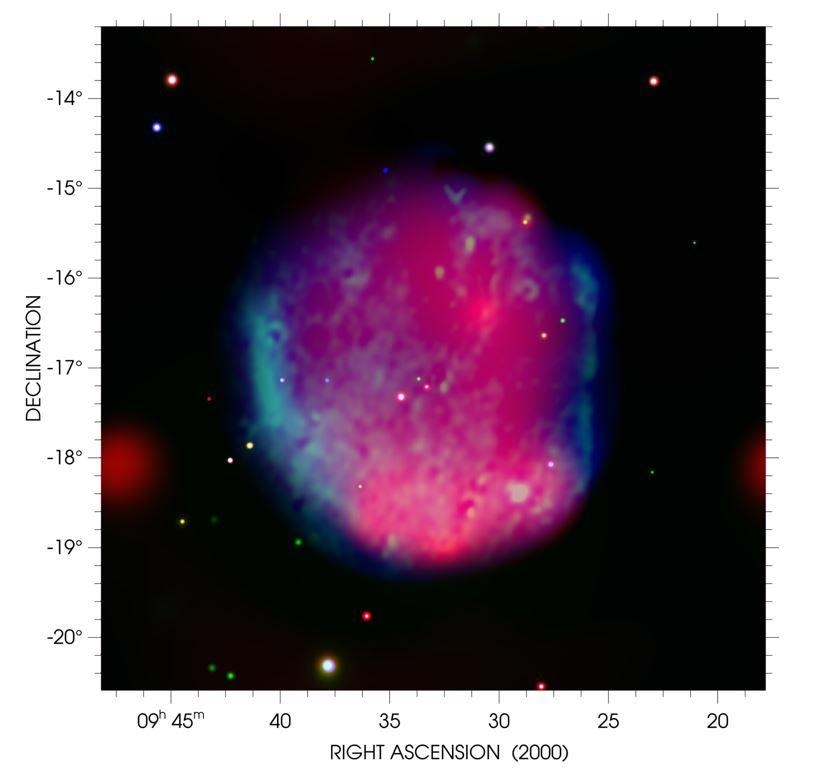Mar 5 2021
An international team of researchers, using powerful new X-ray telescope eROSITA to conduct the first all-sky X-ray survey in 25 years, have detected the largest supernova remnant ever discovered with X-rays, dubbed Hoinga.
 A composite X-ray and radio image of supernova remnant Hoinga. Image Credit: eROSITA/MPE (X-ray), CHIPASS/SPASS/N. Hurley-Walker, ICRAR-Curtin (Radio)
A composite X-ray and radio image of supernova remnant Hoinga. Image Credit: eROSITA/MPE (X-ray), CHIPASS/SPASS/N. Hurley-Walker, ICRAR-Curtin (Radio)
Astrophysicist Dr Natasha Hurley-Walker, from the Curtin University node of the International Centre for Radio Astronomy Research (ICRAR) worked with Astronomy Australia Limited (AAL) to form a collaboration with the international team, including scientists from the Max Planck Institute for Extraterrestrial Physics and the National Institute for Astrophysics.
Dr Natasha Hurley-Walker said the aim was to combine expertise across multiple wavelengths, from radio to X-ray, to search for hundreds of supernova remnants (the remains of exploded stars), and while the team expected to find many over coming years, they were surprised to detect one almost immediately.
“The eROSITA telescope, which is onboard the Russian-German SRG satellite, is 25 times more sensitive than its predecessor ROSAT so we expected to discover new supernova remnants in coming years, but were pleasantly surprised to have one appear straight away,” Dr Hurley-Walker said.
“Adding to our excitement, Hoinga is the largest supernova remnant ever discovered via X-rays, in terms of apparent size: about 90 times larger than the full moon.”
Dr Hurley-Walker said an enduring mystery surrounding supernova remnants was the shortfall between the expected number of them in our galaxy and the number actually identified through past surveys.
“We expect there to be about 1200 supernova remnants in our galaxy, however only about 300 have been found so far,” Dr Hurley-Walker said.
“By sifting through archival radio data we discovered Hoinga had been sitting there waiting to be discovered in surveys up to ten years old, but because it was high above the plane of the Milky Way, it was missed.
“Supernova remnants are not typically expected to be found at high Galactic latitudes so these areas are not usually the focus of surveys, meaning there may be even more of these overlooked remnants out there waiting to be discovered.
“The radio observations made it possible for us to work out that it is a middle-aged remnant relatively close to Earth, calculations that would have been far less accurate with the X-ray data alone.”
Dr Hurley-Walker is currently working on a new radio sky survey, building on the success of GLEAM and hopes the collaboration with the eROSITA team will lead to many more such discoveries in the coming years.
With her colleagues at ICRAR, her work pathfinds toward the development of the SKA-Low telescope, by exploring some of the scientific and technical challenges it will face, using precursor instruments.
The telescope will be built in Western Australia this decade, and when complete will be able to perform rapid and sensitive all-sky radio surveys.